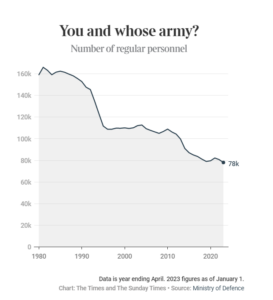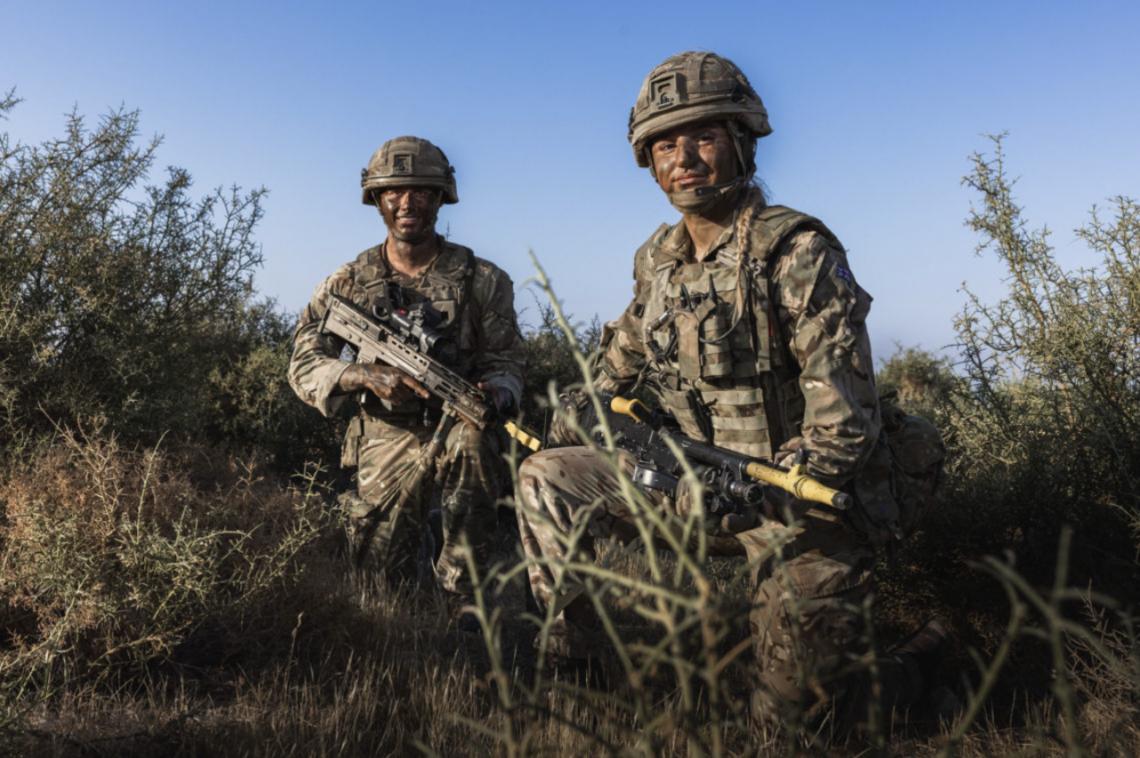Defying pressure from senior generals, British Defense Secretary Ben Wallace will push ahead with army cuts as part of an overhaul of the armed forces next month.
This is what sources told The Times.
Next month, the Ministry of Defense will publish its «defense command paper». Here we learn about the British government’s long-term goals for its military forces.
There are dramatic reductions, particularly in the British Army.
In 2021 the defence secretary announced plans to reduce the number of tanks from 227 to 148 and shrink the army to 73,000 troops, its smallest size since the Napoleonic era.
The decision was therefore taken before Russia invaded Ukraine. But the British government does not seem to change its plans, despite the new geopolitical situation. They trust NATO allies to do the job, and do not listen to their own Chief of Staff.
General Sir Patrick Sanders, the chief of the general staff, said that pursuing the cuts at a time of war in Europe would be “perverse”.
But with Nato allies including Poland, Germany and Finland increasing spending on their land armies, ministers believe that Britain is not under significant pressure to change course and can modernise the armed forces with investments elsewhere.
£5 billion has already been set aside for defense spending. But these do not go to the British Army: 3 billion is spent on new nuclear-powered submarines, and 2 billion goes to arms support for Ukraine. Thus, the British Army continues its long-term reduction.

The Ministry of Defense believes that the tanks are outdated, and refers to how vulnerable they have appeared in Ukraine to weapons such as e.g. Javelin. But at the same time, a Whitehall source believes that they have too many infantrymen.
– We have too much infantry — a legacy of the counter-insurgency wars in Afghanistan and Iraq. We need more artillery. The jury is out on whether you need main battle tanks.
After all, it is infantry on foot who are most effective in using weapons like the Javelin, so this seems a bit strange.
Sources from the army are crystal clear that boots on the ground are necessary.
– The main lesson from Ukraine is you need mass. The truth is we don’t have enough infantry and we don’t have enough artillery.
Moreover, it is obvious that the Russians’ weak tactics in the first part of the invasion are much of the reason why they have lost so many tanks. Tanks need mobility, and then it is not brilliant to invade with a river on one side and be attacked from the other side, while standing in endless queues like sitting ducks.
The British are now betting on the use of drones, which is surely not so stupid. But you cannot win a battle with only drones and artillery, you can only weaken the enemy so that it becomes easier for infantrymen and cavalrymen to complete their mission.
The plans are a continuation of tactics from 2021 when the army established the Rangers, only the third regiment created since the Second World War. Deployed in small units before the main battlegroup, the Rangers can pinpoint enemy targets and relay information to drones for further reconnaissance or to artillery for a strike.
In any case, everything depends on the logistics, which are often forgotten, even though logistics may be the backbone of any military operation.
A spokesman from the Ministry of Defense assures that Britain will continue to act as a deterrent.
Through our updated defence command paper, we will set out defence’s vision and prioritise our activities to ensure the UK remains ready to deter adversaries.We will not be drawn on speculation ahead of publication.
But Sky News already reported the following in January.
- The armed forces would run out of ammunition «in a few days» if called upon to fight
- The UK lacks the ability to defend its skies against the level of missile and drone strikes that Ukraine is enduring
- It would take five to 10 years for the army to be able to field a war-fighting division of some 25,000 to 30,000 troops backed by tanks, artillery and helicopters
- Some 30% of UK forces on high readiness are reservists who are unable to mobilise within NATO timelines – «so we’d turn up under strength»
- The majority of the army’s fleet of armoured vehicles, including tanks, was built between 30 to 60 years ago and full replacements are not due for years
Personally, I’m probably a bit partial here, as an old infantry officer. But the eternal belief that fighter planes, artillery and other technical quirks can win wars alone I consider to have been disproved so many times. They are of course important contributors to a war, but the age of the soldier is not yet over. Artillery without access to enough ammunition is not much of a deterrent either.
The exception is, of course, nuclear weapons, but we do not want to move in that direction.


